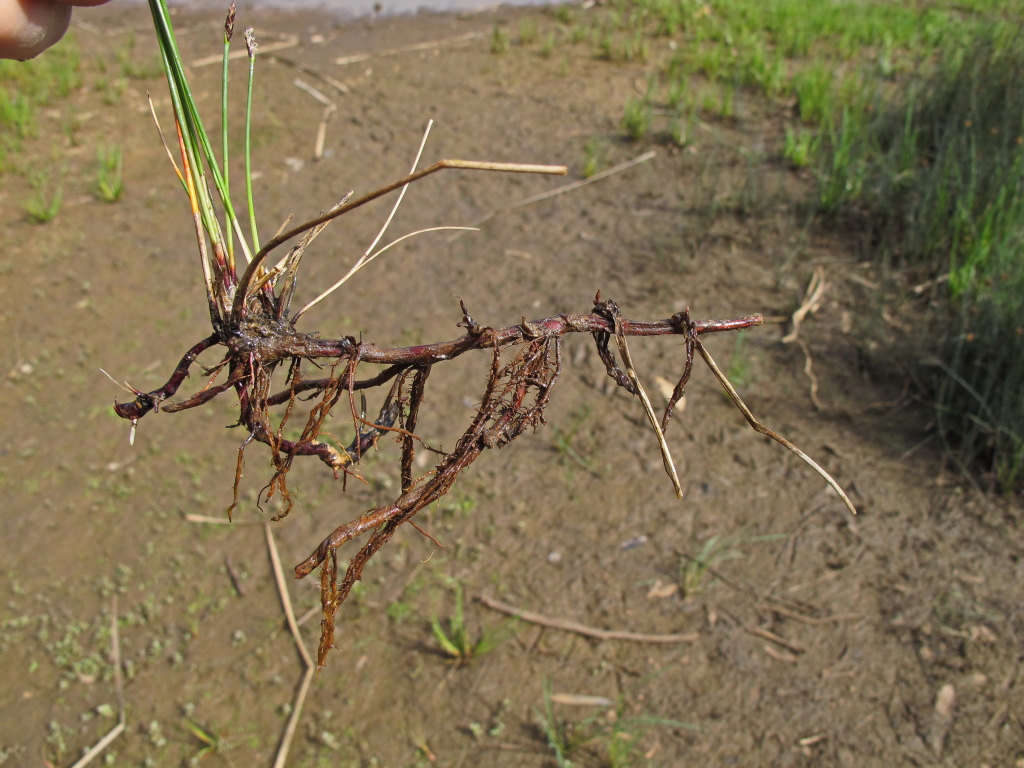Eleocharis acuta
R.Br. Common Spike-rushPerennial with short to long rhizome. Culms tufted, terete but ± trigonous at apex, 10–60(–90) cm high, 0.5–3 mm diam. Spikelet narrow-ovoid to narrow-cylindric, 5–30 mm long; glumes long-acute to broad-acute, midrib distinct, straw-coloured tinged red-brown to dark red-brown, 3–4.5 mm long; hypogynous bristles 6–9, flattened below, usually strongly retrorsely toothed, rather unequal, reaching or somewhat overtopping the style-base, occasionally reduced or absent; stamens 3; anthers 1.1–3.4 mm long; style (2–)3-fid. Nut plano-convex to biconvex, angles obtuse, broad-obovoid, shining, yellow to dark brown, 1–1.7 mm long, 0.8–1.2 mm diam., external cells minute, shortly vertically oblong; style-base from one-quarter to one-half as wide as nut. Flowers spring–summer.
LoM, MuM, Wim, GleP, Brid, VVP, VRiv, MSB, RobP, MuF, GipP, OtP, WaP, Gold, CVU, GGr, DunT, NIS, EGL, EGU, WPro, HSF, HNF, OtR, Strz, MonT, VAlp. All States. New Zealand, New Guinea. Widespread and common in swamps, on lake margins and along watercourses throughout the lowlands, occasionally extending to the subalps (e.g. the Nunniong Plateau).
There is a form of this species chiefly found in the far north-west of the State, on sandy or silty soils of lake and stream margins. These plants are smaller than in typical E. acuta, and have the bristles reduced. However, there are no obvious qualitative characters to separate this form from E. acuta. Further study is needed to establish the status of this form.
Wilson, K.L. (1994). Cyperaceae. In: Walsh, N.G.; Entwisle, T.J., Flora of Victoria Vol. 2, Ferns and Allied Plants, Conifers and Monocotyledons, pp. 238–356. Inkata Press, Melbourne.
 Spinning
Spinning



